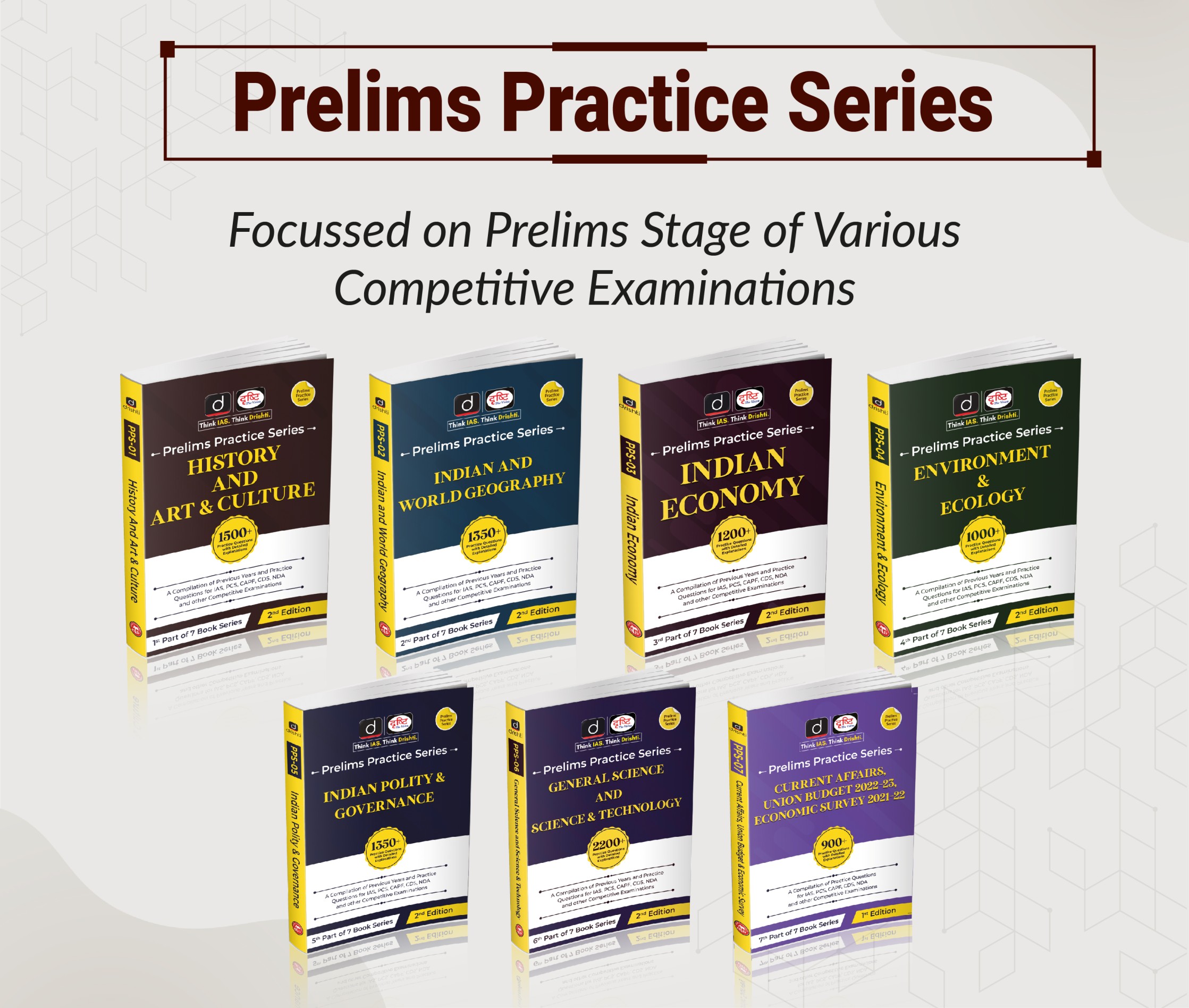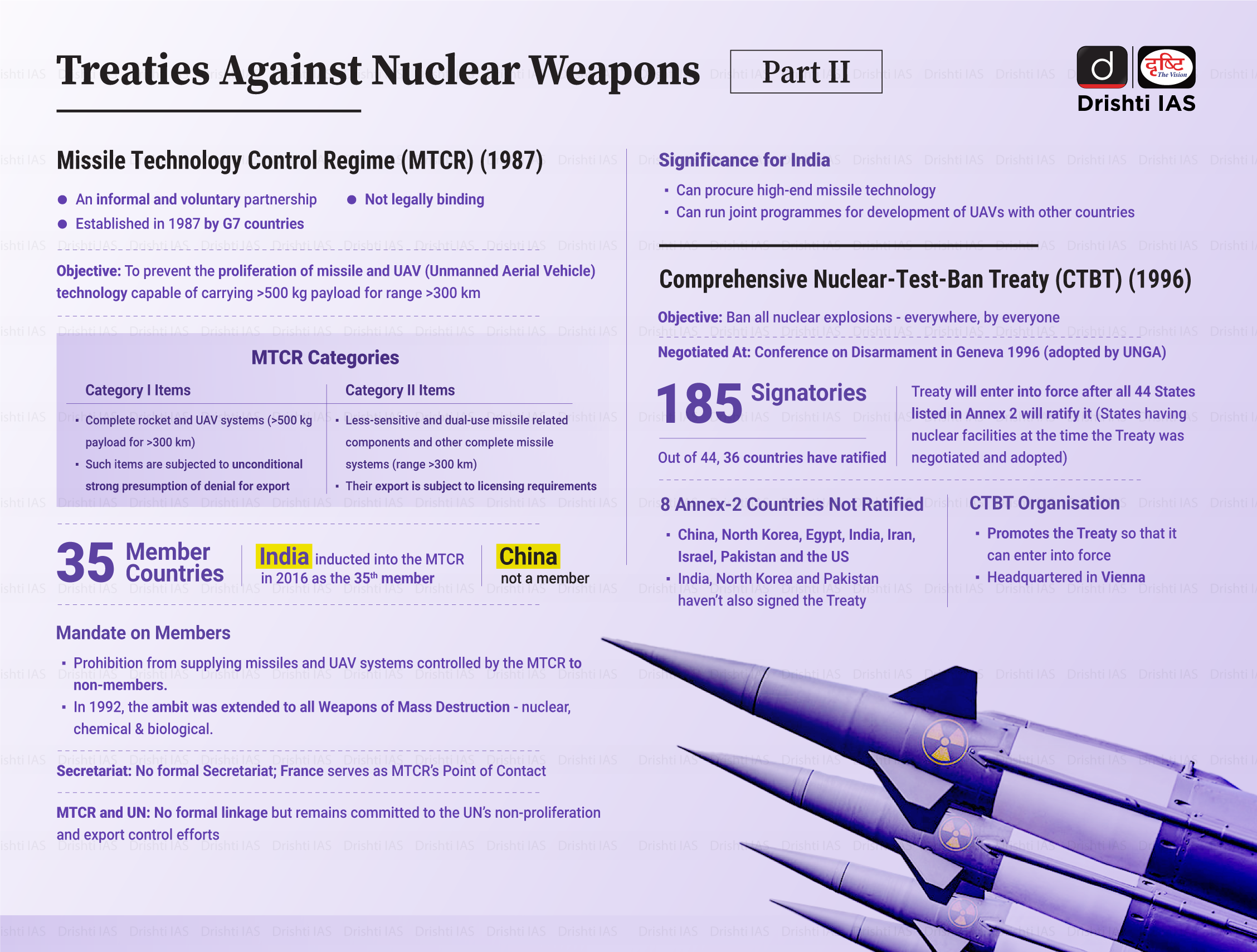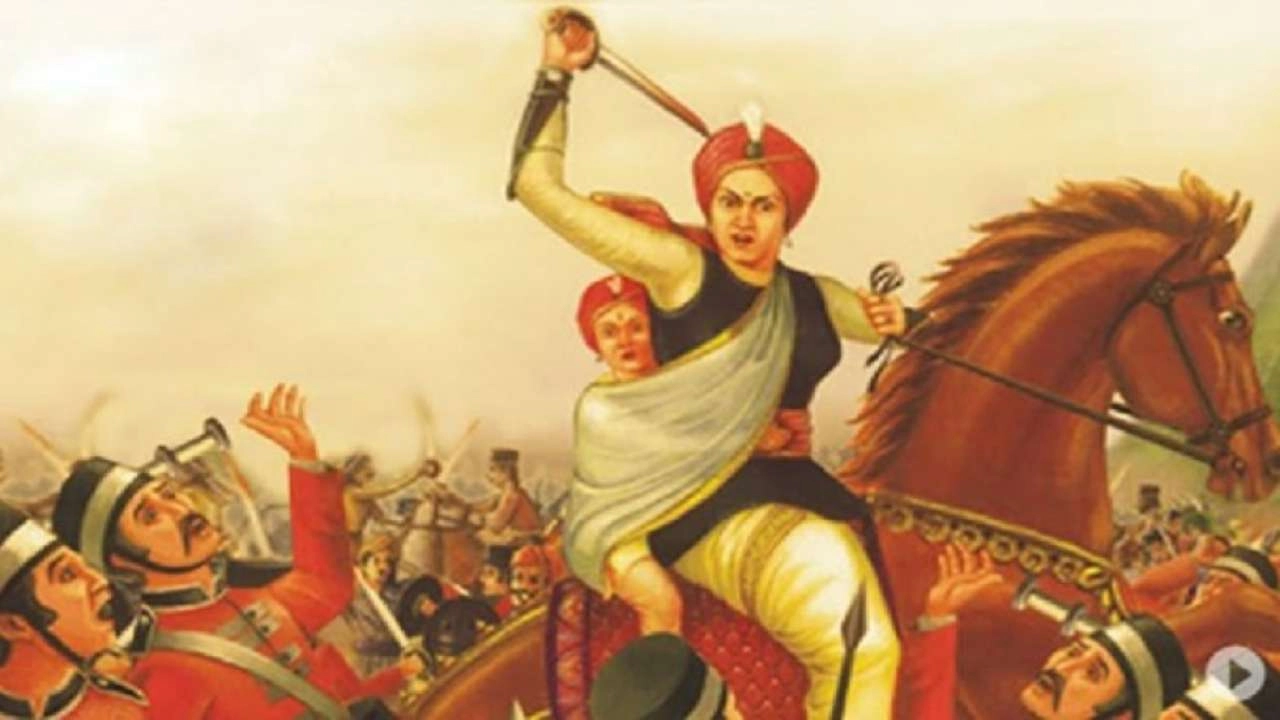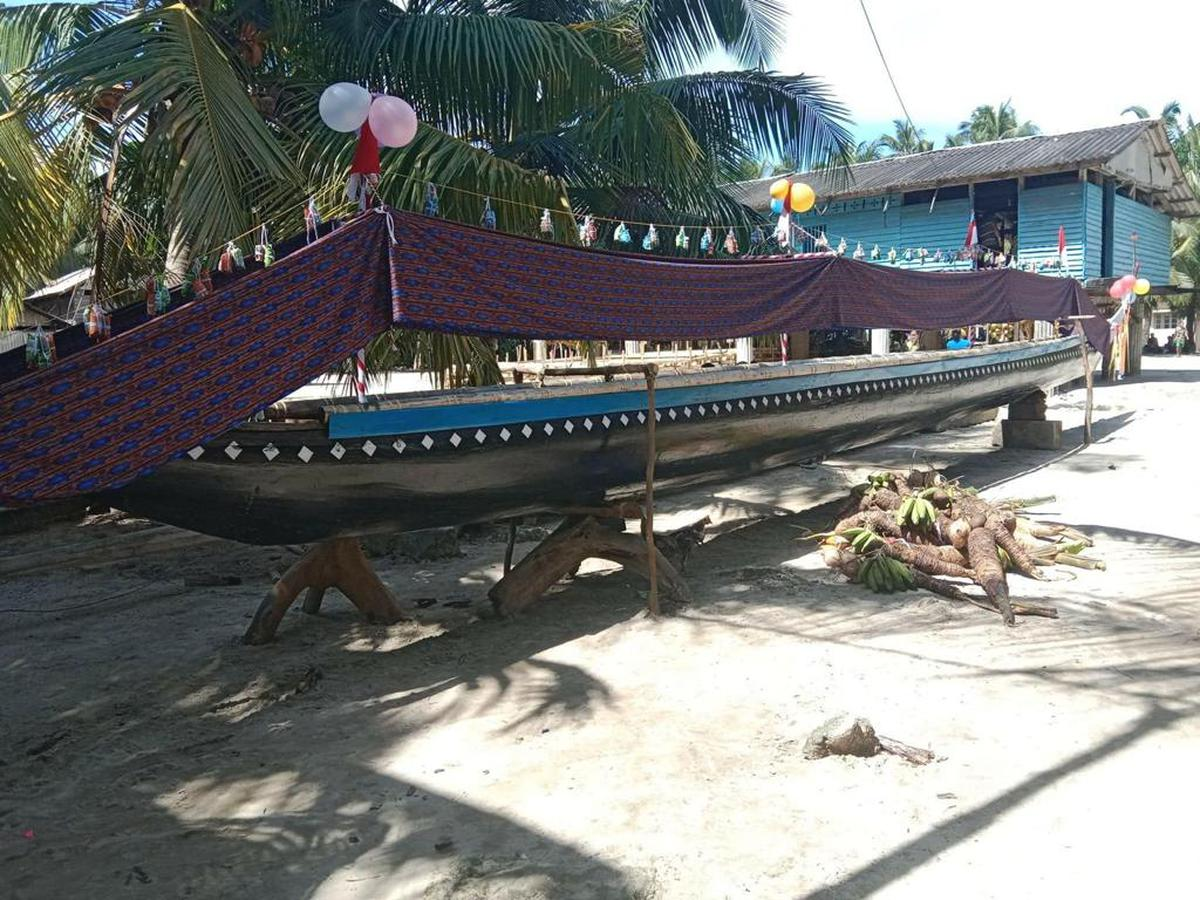Infographics
Governance
Digital Personal Data Protection Bill 2022
For Prelims: Digital Personal Data Protection Bill, Right to Privacy, Puttaswamy Judgement, Data Protection Laws of Other Nations
For Mains: Provisions of Digital Personal Data Protection Bill 2022, Puttaswamy Judgement, Data Protection Laws of Other Nations
Why in News?
The Union Government has released a revised personal data protection bill, now called the Digital Personal Data Protection Bill, 2022.
- The Bill has been introduced after 3 months of the withdrawal of the Personal Data Protection Bill, 2019.
What are the Seven Principles of the 2022 Bill?
- Firstly, usage of personal data by organisations must be done in a manner that is lawful, fair to the individuals concerned and transparent to individuals.
- Secondly, personal data must only be used for the purposes for which it was collected.
- The third principle talks of data minimisation.
- The fourth principle puts an emphasis on data accuracy when it comes to collection.
- The fifth principle talks of how personal data that is collected cannot be “stored perpetually by default” and storage should be limited to a fixed duration.
- The sixth principle says that there should be reasonable safeguards to ensure there is “no unauthorized collection or processing of personal data”.
- Seventh principle states that “the person who decides the purpose and means of the processing of personal data should be accountable for such processing”.
What are the Key Features of the Digital Personal Data Protection Bill?
- Data Principal and Data Fiduciary:
- Data Principal refers to the individual whose data is being collected.
- In the case of children (<18 years), their parents/lawful guardians will be considered their “Data Principals”.
- Data Fiduciary is the entity (individual, company, firm, state etc), which decides the “purpose and means of the processing of an individual’s personal data”.
- Personal Data is “any data by which an individual can be identified”.
- Processing means “the entire cycle of operations that can be carried out in respect of personal data”.
- Significant Data Fiduciary:
- Significant Data Fiduciaries are those who deal with a high volume of personal data. The Central government will define who is designated under this category based on a number of factors.
- Such entities will have to appoint a ‘Data protection officer’ and an independent Data Auditor.
- Data Principal refers to the individual whose data is being collected.
- Rights of Individuals:
- Access to Information:
- The bill ensures that individuals should be able to “access basic information” in languages specified in the eighth schedule of the Indian Constitution.
- Right to Consent:
- Individuals need to give consent before their data is processed and “every individual should know what items of personal data a Data Fiduciary wants to collect and the purpose of such collection and further processing”.
- Individuals also have the right to withdraw consent from a Data Fiduciary.
- Right to Erase:
- Data principals will have the right to demand the erasure and correction of data collected by the data fiduciary.
- Right to Nominate:
- Data principals will also have the right to nominate an individual who will exercise these rights in the event of their death or incapacity.
- Access to Information:
- Data Protection Board:
- The Bill also proposes to set up a Data Protection Board to ensure compliance with the Bill.
- In case of an unsatisfactory response from the Data Fiduciary, the consumers can file a complaint to the Data Protection Board.
- Cross-border Data Transfer:
- The bill allows for cross-border storage and transfer of data to “certain notified countries and territories” provided they have a suitable data security landscape, and the Government can access data of Indians from there.
- Financial Penalties:
- For Data Fiduciary:
- The bill proposes to impose significant penalties on businesses that undergo data breaches or fail to notify users when breaches happen.
- The penalties will be imposed ranging from Rs. 50 crores to Rs. 500 crores.
- For Data Principal:
- If a user submits false documents while signing up for an online service, or files frivolous grievance complaints, the user could be fined up to Rs 10,000.
- For Data Fiduciary:
- Exemptions:
- The government can exempt certain businesses from adhering to provisions of the bill on the basis of the number of users and the volume of personal data processed by the entity.
- This has been done keeping in mind startups of the country who had complained that the Personal Data Protection Bill, 2019 was too “compliance intensive”.
- National security-related exemptions, similar to the previous 2019 version, have been kept intact.
- The Centre has been empowered to exempt its agencies from adhering to provisions of the Bill in the interest of sovereignty and integrity of India, security of the state, friendly relations with foreign states, maintenance of public order or preventing incitement to any cognisable offence.
- The government can exempt certain businesses from adhering to provisions of the bill on the basis of the number of users and the volume of personal data processed by the entity.
Why is Digital Personal Data Protection Bill Significant?
- The new Bill offers significant concessions on cross-border data flows, in a departure from the previous Bill’s contentious requirement of local storage of data within India’s geography.
- It offers a relatively soft stand on data localisation requirements and permits data transfer to select global destinations which is likely to foster country-to-country trade agreements.
- The bill recognises the data principal's right to postmortem privacy (Withdraw Consent) which was missing from the PDP Bill, 2019 but had been recommended by the Joint Parliamentary Committee (JPC).
How has India Strengthened Data Protection Regime?
- Justice K. S. Puttaswamy (Retd) vs Union of India 2017:
- In August 2017, a nine-judge bench of the Supreme Court in Justice K. S. Puttaswamy (Retd) Vs Union of India unanimously held that Indians have a constitutionally protected fundamental right to privacy that is an intrinsic part of life and liberty under Article 21.
- B.N. Srikrishna Committee 2017:
- Government appointed a committee of experts for Data protection under the chairmanship of Justice B N Srikrishna in August 2017, that submitted its report in July 2018 along with a draft Data Protection Bill.
- The Report has a wide range of recommendations to strengthen privacy law in India including restrictions on processing and collection of data, Data Protection Authority, right to be forgotten, data localisation etc.
- Government appointed a committee of experts for Data protection under the chairmanship of Justice B N Srikrishna in August 2017, that submitted its report in July 2018 along with a draft Data Protection Bill.
- Information Technology (Intermediary Guidelines and Digital Media Ethics Code) Rules 2021:
- IT Rules (2021) mandate social media platforms to exercise greater diligence with respect to the content on their platforms.
What Data Protection Laws are there in Other Nations?
- European Union Model:
- The General Data Protection Regulation focuses on a comprehensive data protection law for processing of personal data.
- In the EU, the right to privacy is enshrined as a fundamental right that seeks to protect an individual’s dignity and her right over the data she generates.
- US Model:
- There is no comprehensive set of privacy rights or principles in the US that, like the EU’s GDPR, addresses the use, collection, and disclosure of data.
- Instead, there is limited sector-specific regulation. The approach towards data protection is different for the public and private sectors.
- The activities and powers of the government vis-a-vis personal information are well-defined and addressed by broad legislation such as the Privacy Act, the Electronic Communications Privacy Act, etc.
- For the private sector, there are some sector-specific norms.
- China Model:
- New Chinese laws on data privacy and security issued over the last 12 months include the Personal Information Protection Law (PIPL), which came into effect in November 2021.
- It gives Chinese data principals new rights as it seeks to prevent the misuse of personal data.
- The Data Security Law (DSL), which came into force in September 2021, requires business data to be categorized by levels of importance, and puts new restrictions on cross-border transfers.
- New Chinese laws on data privacy and security issued over the last 12 months include the Personal Information Protection Law (PIPL), which came into effect in November 2021.
UPSC Civil Services Examination, Previous Year Questions (PYQs)
Prelims
Q1. ‘Right to Privacy’ is protected under which Article of the Constitution of India? (2021)
(a) Article 15
(b) Article 19
(c) Article 21
(d) Article 29
Ans: (c)
Exp:
- In Puttaswamy v. Union of India case, 2017, the Right to Privacy was declared a fundamental right by the Supreme Court.
- Right to Privacy is protected as an intrinsic part of the Right to Life and Personal Liberty under Article 21 and as a part of the freedoms guaranteed by Part III of the Indian Constitution.
- Privacy safeguards individual autonomy and recognizes one’s ability to control vital aspects of his/ her life. Privacy is not an absolute right, but any invasion must be based on legality, need and proportionality.
- Therefore, option (c) is the correct answer.
Q2. Right to Privacy is protected as an intrinsic part of Right to Life and Personal Liberty. Which of the following in the Constitution of India correctly and appropriately imply the above statement? (2018)
(a) Article 14 and the provisions under the 42nd Amendment to the Constitution.
(b) Article 17 and the Directive Principles of State Policy in Part IV.
(c) Article 21 and the freedoms guaranteed in Part III.
(d) Article 24 and the provisions under the 44th Amendment to the Constitution.
Ans: (c)
Explanation:
- In 2017, a nine-judge bench of the Supreme Court (SC) in its verdict in Justice K.S. Puttaswamy v. Union of India case unanimously affirmed that the Right to Privacy is a Fundamental Right under the Indian Constitution.
- The SC bench held that the privacy is a Fundamental Right as it is intrinsic to guarantee of life and personal liberty as provided under Article 21 of the Constitution.
- The bench also stated that the elements of privacy also arise in varying contexts from the other facets of freedom and dignity recognised and guaranteed by the Fundamental Rights contained in Part III of the Constitution.
- Therefore, option (c) is the correct answer.
Mains
Q. Examine the scope of Fundamental Rights in the light of the latest judgement of the Supreme Court on Right to Privacy. (2017)


Biodiversity & Environment
Loss and Damage Funding for Climate Damages
For Prelims: COP27 summit, Loss and Damage Funding, greenhouse gas emissions, global warming, Warsaw International Mechanism on Loss and Damages, Green Climate Fund
For Mains: Environmental Pollution & Degradation
Why in News?
At the recently concluded COP27 summit, delegates from the United Nations agreed to create a 'Loss and Damages' fund which will compensate the most vulnerable countries for their losses due to climate-related disasters.
What is 'Loss and Damage' Funding?
- 'Loss and Damage' refers to impacts of climate change that cannot be avoided either by mitigation (cutting greenhouse gas emissions) or adaptation (modifying practices to buffer against climate change impacts).
- They also include not only economic damage to property but also loss of livelihoods, and the destruction of biodiversity and sites that have cultural importance.
- This broadens the scope for affected nations to claim compensation.
How has the Concept of Loss and Damage Evolved?
- Since the United Nations Framework Convention on Climate Change was formed in the early 1990s, loss and damage due to climate change have been debated.
- The Least Developed Countries Group has long aimed to establish accountability and compensation for loss and destruction.
- However, historically blamed for the climate catastrophe, rich countries have overlooked the concerns of vulnerable countries.
- Warsaw International Mechanism on Loss and Damages (WIM) was founded in 2013 without funding after extensive pressure from developing countries.
- However, during the 2021 COP26 climate summit in Glasgow, a 3-year task force was established to consider a funding arrangement for loss and damage.
- So far, Canada, Denmark, Germany, New Zealand, Scotland and the Belgian province of Wallonia have all expressed interest in loss and damage funding.
What are the Concerns regarding the Establishment of the Fund?
- As far as future COP negotiations are concerned, it only commits to creating a fund and leaves it up to discussion how it will be set up and, most importantly, who will contribute to it.
- While there have been nominal commitments by certain countries to donate to such a fund, the estimated L&D is already over USD 500 billion.
- During negotiations in COP27, the European Union pressed hard for China, the Arab states and “large, developing countries” (probably even India) to contribute on the grounds that they were large emitters.
- There is no agreement yet on what counts as "loss and damage" caused by climate change - which could include infrastructure damage, property damage, and cultural assets whose value is hard to quantify.
- Climate funding so far has focused mostly on cutting carbon dioxide emissions in an effort to curb global warming, while about a third of it has gone toward projects to help communities adapt to future impacts.
What are India's Related Initiatives?
- National Adaptation Fund for Climate Change (NAFCC):
- It was established in 2015 to meet the cost of adaptation to climate change for the State and Union Territories of India that are particularly vulnerable to the adverse effects of climate change.
- National Clean Energy Fund:
- The Fund was created to promote clean energy, and funded through an initial carbon tax on the use of coal by industries.
- It is governed by an Inter-Ministerial Group with the Finance Secretary as the Chairman.
- Its mandate is to fund research and development of innovative clean energy technology in the fossil and non-fossil fuel-based sectors.
- National Adaptation Fund:
- The fund was established in 2014 with a corpus of Rs. 100 crores with the aim of bridging the gap between the need and the available funds.
- The fund is operated under the Ministry of Environment, Forests, and Climate Change (MoEF&CC).
Way Forward
- While the gain is incremental, countries ought not to lose momentum and must work harder to ensure that COPs remain credible catalysts and are not mere occasions for some hollow victories.
- Further, there is a need to sustain a political commitment to raising new finance, besides, ensuring that finance is better targeted at reducing emissions and vulnerability. Learning and improving from recent experiences, particularly as the Green Climate Fund gets to work.
UPSC Civil Services Examination, Previous Year Questions (PYQs)
Prelims
Q. Which of the following statements is/are correct about the deposits of ‘methane hydrate’? (2019)
- Global warming might trigger the release of methane gas from these deposits.
- Large deposits of ‘methane hydrate’ are found in Arctic Tundra and under the sea floor.
- Methane in atmosphere oxidizes to carbon dioxide after a decade or two.
Select the correct answer using the code given below.
(a) 1 and 2 only
(b) 2 and 3 only
(c) 1 and 3 only
(d) 1, 2 and 3
Ans: (d)
- Methane hydrate is a crystalline solid that consists of a methane molecule surrounded by a cage of interlocking water molecules. It is an “ice” that only occurs naturally in subsurface deposits where temperature and pressure conditions are favourable for its formation.
- Regions with suitable temperature and pressure conditions for the formation and stability of methane hydrate– sediment and sedimentary rock units below the Arctic permafrost; sedimentary deposits along ontinental margins; deep-water sediments of inland lakes and seas; and, under Antarctic ice. Hence, statement 2 is correct.
- Methane hydrates, the sensitive sediments, can rapidly dissociate with an increase in temperature or a decrease in pressure. The dissociation produces free methane and water, which can be triggered by global warming. Hence, statement 1 is correct.
- Methane is removed from the atmosphere in about 9 to 12 year period by oxidation reaction where it is converted into Carbon Dioxide. Hence, statement 3 is correct. Therefore, option (d) is the correct answer.
Mains
Q. Explain the purpose of the Green Grid Initiative launched at World Leaders Summit of the COP26 UN Climate Change Conference in Glasgow in November, 2021. When was this idea first floated in the International Solar Alliance (ISA)? (2021)
Q. Describe the major outcomes of the 26th session of the Conference of the Parties (COP) to the United Nations Framework Convention on Climate Change (UNFCCC). What are the commitments made by India in this conference? (2021)

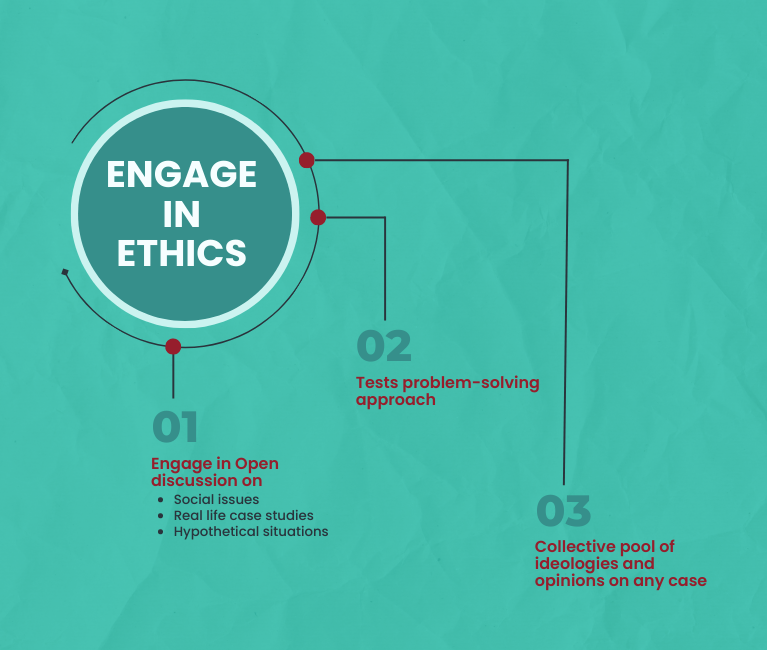
Indian Heritage & Culture
Sufism
For Prelims: Islamic mysticism, Asceticism, Chisti, Suhrawardi Order.
For Mains: Sufism.
Why in News?
Recently, a book ‘In Search of the Divine: Living Histories of Sufism in India’ has been published.
What is Sufism?
- About:
- Sufism is a mystical form of Islam, a school of practice that focuses on the spiritual search for God and shuns materialism.
- It is a form of Islamic mysticism which stresses on asceticism. There is a lot of emphasis on devotion towards God.
- In Sufism, self-discipline is considered an essential condition to gain knowledge of God by sense of perception.
- In the beginning of 12 AD, some religious people in Persia turned to asceticism due to the increasing materialism of the Caliphate. They came to be called the ‘Sufis’.
- In India, Sufi movement began in 1300 A.D & came to South India in the 15th century.
- In Sufism, self-discipline was considered an essential condition to gain knowledge of God. While orthodox Muslims emphasize external conduct, the Sufis lay stress on inner purity.
- Multan and Punjab were the early centers and later on, it spread to Kashmir, Bihar, Bengal and the Deccan.
- Etymology:
- The term ‘Sufi’ is probably derived from the Arabic ‘suf’ word which means ‘one who wears wool’. This is because woolen clothes were generally associated with ascetics. Another possible origin of the word is ‘safa’ which means purity in Arabic.
- Stages of Sufism:
- 1st Stage (Khanqah): Started in 10th century, also called the age of Golden Mysticism
- 2nd Stage (Tariqa): 11-14th century, when Sufism was being institutionalized and traditions and symbols started being attached to it.
- 3rd Stage (Tarifa): Started in the 15th century, at this the stage when Sufism became a popular movement.
- Major Sufi Orders:
- Chisti:
- Chishtiya Order was founded in India by Khwaja Moin-Uddin Chishti.
- It emphasised the doctrine of the unity of being with God (waḥdat al-wujūd) and members of the order were also pacifists.
- They rejected all material goods as distractions from the contemplation of God.
- They abstained from connection with the secular state.
- Recitation of the names of God, both aloud and silently (dhikr jahrī, dhikr khafī), formed the cornerstone of Chishtī practice.
- The Chishty teachings were carried forward and popularized by disciples of Khwaja Moin-Uddin Chishti like Khwaja Qutbuddin Bakhtiyar Kaki, Fareeduddin Ganj-e-Shakar, Nizam uddin Auliya and Naseeruddin Charagh.
- Suhrawardi Order:
- It was founded by Sheikh Shahabuddin Suharwardi Maqtul.
- The Suhrawardis, unlike the Chishtis, accepted maintenance grants from the Sultans.
- Naqshbandi Order:
- It was founded by the Khwaja Baha-ul-din Naqsh band.
- In India, this order was established by Khwaja Bahauddin Naqshbandi.
- From the beginning, the mystics of this Order stressed on the observance of the Shariat.
- Qadiriyya Order:
- It was popular in Punjab.
- Sheikh Abdul Qadir of Badaun founded it in the 14th century.
- They were supporters of the Mughals under Akbar.
- Chisti:


Important Facts For Prelims
Rani Lakshmibai
Why in News?
Recently, the Prime Minister of India visited Jhansi on the eve of Rani Lakshmibai’s birth anniversary.
Who was Rani Lakshmibai?
- About:
- Rani Lakshmibai is also known as Jhansi Ki Rani.
- She was the queen of the Maratha-ruled princely state of Jhansi.
- She was one of the leading figures of the Indian Revolt of 1857.
- She’s seen as a symbol of resistance to British rule in India.
- Early Life:
- She was born on 19th November 1828 in Varanasi, Uttar Pradesh.
- She was originally named Manikarnika.
- While pursuing studies, she also took formal training in martial arts, which included horse riding, shooting and fencing.
- Manu’s companions included Nana Sahib (the adopted son of the Peshwa) and Tatya Tope.
- Manu as Jhansi Ki Rani:
- At the age of 14, Manu got married to the Maharaja of Jhansi, Gangadhar Rao Newalkar, whose first wife had passed away before having a child and who was trying to have an heir to succeed him at the throne.
- Hence, Manikarnika became Laxmibai, Rani of Jhansi.
- Rani Lakshmibai gave birth to a son in who died after just three months of birth. The couple later adopted a son, Damodar Rao, from Gangadhar Rao’s extended family.
- At the age of 14, Manu got married to the Maharaja of Jhansi, Gangadhar Rao Newalkar, whose first wife had passed away before having a child and who was trying to have an heir to succeed him at the throne.
- Role in Struggle for Independence:
- Rani Lakshmibai was one of the brave warriors of India's struggle for Independence.
- In 1853, when the Maharaja of Jhansi died, Lord Dalhousie refused to acknowledge the (adopted) child and applied the Doctrine of Lapse, and annexed the state.
- Rani Lakshmibai fought bravely against the British so as to save her empire from annexation.
- She died fighting on the battlefield on 17th June 1858.
- When the Indian National Army started its first female unit (in 1943), it was named after the valiant queen of Jhansi.
What was the Doctrine of Lapse?
- It was an annexation policy followed widely by Lord Dalhousie when he was India's Governor-General from 1848 to 1856.
- According to this, any princely state that was under the direct or indirect control of the East India Company where the ruler did not have a legal male heir would be annexed by the company.
- As per this, any adopted son of the Indian ruler could not be proclaimed as heir to the kingdom.
- By applying the doctrine of lapse, Dalhousie annexed the States of:
- Satara (1848 A.D.),
- Jaitpur, and Sambalpur (1849 A.D.),
- Baghat (1850 A.D.),
- Udaipur (1852 A.D.),
- Jhansi (1853 A.D.), and
- Nagpur (1854 A.D.)


Important Facts For Prelims
Kashi Tamil Sangamam
Why in News?
Prime Minister of India inaugurated the month-long Kashi Tamil Sangamam in Varanasi, Uttar Pradesh.
- This programme is an initiative by Government of India as a part of “Azadi ka Amrit Mahotsav” and to uphold the Spirit of Ek Bharat Sreshtha Bharat .
What is Kashi Tamil Sangamam?
- About:
- Kashi Tamil Sangamam celebrates many aspects of the historical and civilisational connection between India’s North and South.
- The broader objective is to bring the two knowledge and cultural traditions (of the North and South) closer, create an understanding of our shared heritage and deepen the people-to-people bond between the regions.
- It is being organized by the Ministry of Education in collaboration with other ministries like Culture, Textiles, Railways, Tourism, Food Processing, Information & Broadcasting etc. and the Government of Uttar Pradesh.
- The endeavour is in sync with National Education Policy (NEP), 2020’s emphasis on integrating the wealth of Indian Knowledge Systems with modern systems of knowledge.
- IIT Madras and Banaras Hindu University (BHU) are the two implementing agencies for the programme.
- Cultural Significance:
- King Parakrama Pandya, who ruled over the region around Madurai in the 15th century, wanted to build a temple to Lord Shiva, and he travelled to Kashi (Uttar Pradesh) to bring back a lingam.
- While returning, he stopped to rest under a tree — but when he tried to continue his journey, the cow carrying the lingam refused to move.
- Parakrama Pandya understood this to be the Lord’s wish, and installed the lingam there, a place that came to be known as Sivakasi, Tamil Nadu.
- For devotees who could not visit Kashi, the Pandyas had built the Kasi Viswanathar Temple in what is today Tenkasi in southwestern Tamil Nadu, close to the state’s border with Kerala.


Important Facts For Prelims
Nicobari Hodi Craft
Why in News?
Recently, the Andaman & Nicobar Islands has filed an application, seeking the Geographical Indication (GI) tag for the Nicobari Hodi craft.
- This is the first application from the Union Territory seeking a tag for one of its products.
- Earlier, the government awarded the GI tag to Mithila Makhana.
What is Nicobari Hodi?
- The hodi is the Nicobari tribe’s traditional craft. It is an outrigger canoe, very commonly operated in the Nicobar group of islands.
- The technical skills for building a hodi are based on indigenous knowledge inherited by the Nicobarese from their forefathers.
- The hodi is built using either locally available trees or from nearby islands, and its design varies slightly from island to island.
- Considerations to be taken into account include the length of the finished canoe, which has to be 12 times that of its width, while the length of the undressed tree trunk has to be 15 times this width.
- Hodis are used for transporting people and goods from one island to another, for sending coconuts, for fishing and racing purposes.
- The tuhet, a group of families under a headman, consider the hodi an asset. Hodi races are held between islands and villages.
What is a Geographical Indication (GI) Tag?
- About:
- The GI is an indication used to identify goods having special characteristics originating from a definite geographical territory.
- The Geographical Indications of Goods (Registration and Protection) Act, 1999 seeks to provide for the registration and better protection of geographical indications relating to goods in India.
- It is governed and directed by the WTO Agreement on Trade-Related Aspects of Intellectual Property Rights (TRIPS).
- It was decided and also stated under Articles 1 (2) and 10 of the Paris Convention that the protection of industrial Property and Geographical Indication are elements of Intellectual Property.
- It is primarily an agricultural, natural or a manufactured product (handicrafts and industrial goods).
- Validity:
- This tag is valid for a period of 10 years following which it can be renewed.
- Significance:
- Once a product gets this tag, no person or company can sell a similar item under that name.
- GI registration of a product provides it legal protection and prevention against unauthorised use by others.
- GI tag helps in promoting the exports of the product.
- It also provides comfort to customers about the authenticity of that product.
- GI Registration:
- There is a proper process of registration of GI products which includes filing of application, preliminary scrutiny and examination, show cause notice, publication in the geographical indications journal, opposition to registration, and registration.
- Any association of persons, producers, organisation or authority established by or under the law can apply.
- The applicant must represent the interest of the producers.
- The Geographical Indications Registry responsible for administration of GI Goods is established at Chennai.
- There is a proper process of registration of GI products which includes filing of application, preliminary scrutiny and examination, show cause notice, publication in the geographical indications journal, opposition to registration, and registration.
- GI Tag Products:
- Some famous goods which carry this tag include Basmati rice, Darjeeling Tea, Chanderi Fabric, Mysore Silk, Kullu Shawl, Kangra Tea, Thanjavur Paintings, Allahabad Surkha, Farrukhabad Prints, Lucknow Zardozi, Kashmir Saffron and Kashmir Walnut Wood Carving.
UPSC Civil Services Examination, Previous Years Questions (PYQs)
Q1. Which of the following has/have been accorded ‘Geographical Indication’ status? (2015)
- Banaras Brocades and Sarees
- Rajasthani Daal-Bati-Churma
- Tirupathi Laddu
Select the correct answer using the code given below:
(a) 1 only
(b) 2 and 3 only
(c) 1 and 3 only
(d) 1, 2 and 3
Ans: (c)
Exp:
- A Geographical Indication (GI) is a sign used on products that have a specific geographical origin and possess qualities or a reputation that are due to that origin.
- Darjeeling tea was the first product in India to get a GI tag.
- Banaras Brocades and Sarees and Tirupathi Laddu have got GI tag while Rajathan’s Daal-Baati-Churma does not. Hence, 1 and 3 are correct. Therefore, option (c) is the correct answer.
Q2. India enacted the Geographical Indications of Goods (Registration and Protection) Act, 1999 in order to comply with the obligations to (2018)
(a) ILO
(b) IMF
(c) UNCTAD
(d) WTO
Ans: (d)
Exp:
- Geographical indications (GIs) are a type of intellectual property (IP). The World Trade Organisation (WTO) recognises intellectual property rights under TRIPS (TradeRelated Aspects of Intellectual Property Rights) Agreement.
- Under Article 22(1) of the TRIPS Agreement, the GIs are defined as “indications which identify a good as originating in the territory of a Member, or a region or locality in that territory, where a given quality, reputation or other characteristic of the good is essentially attributable to its geographic origin”.
- Therefore, option (d) is the correct answer.

